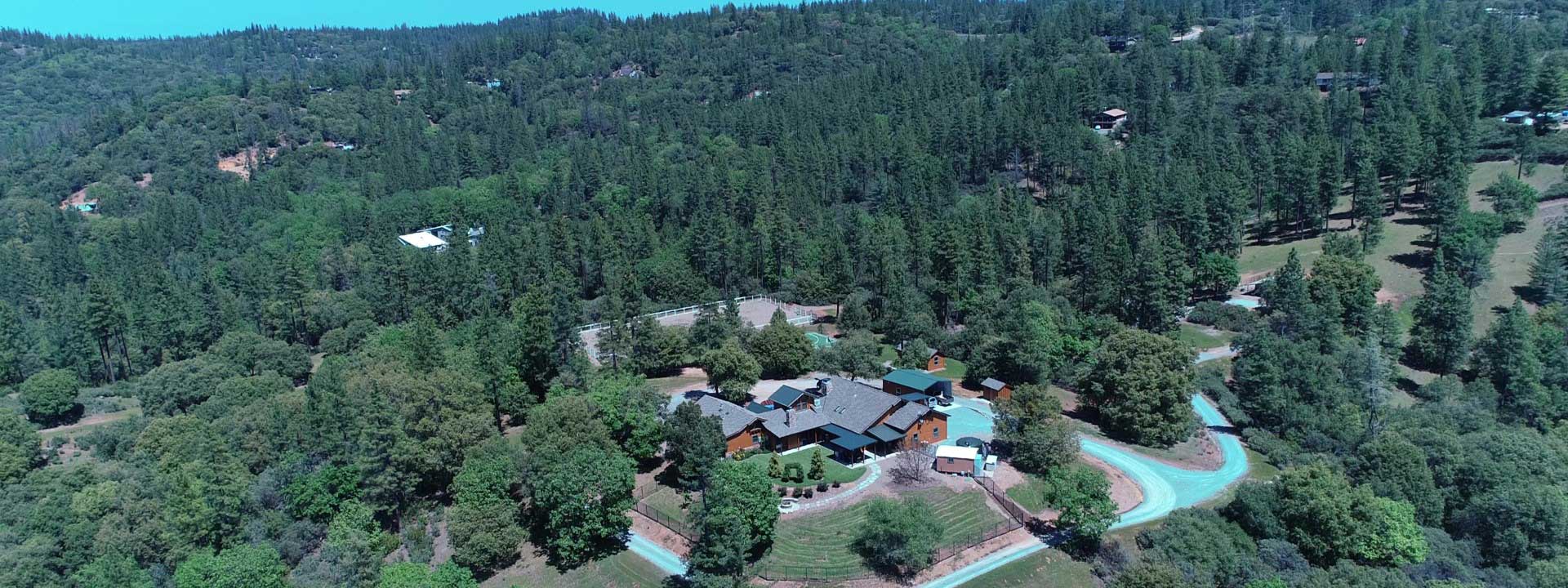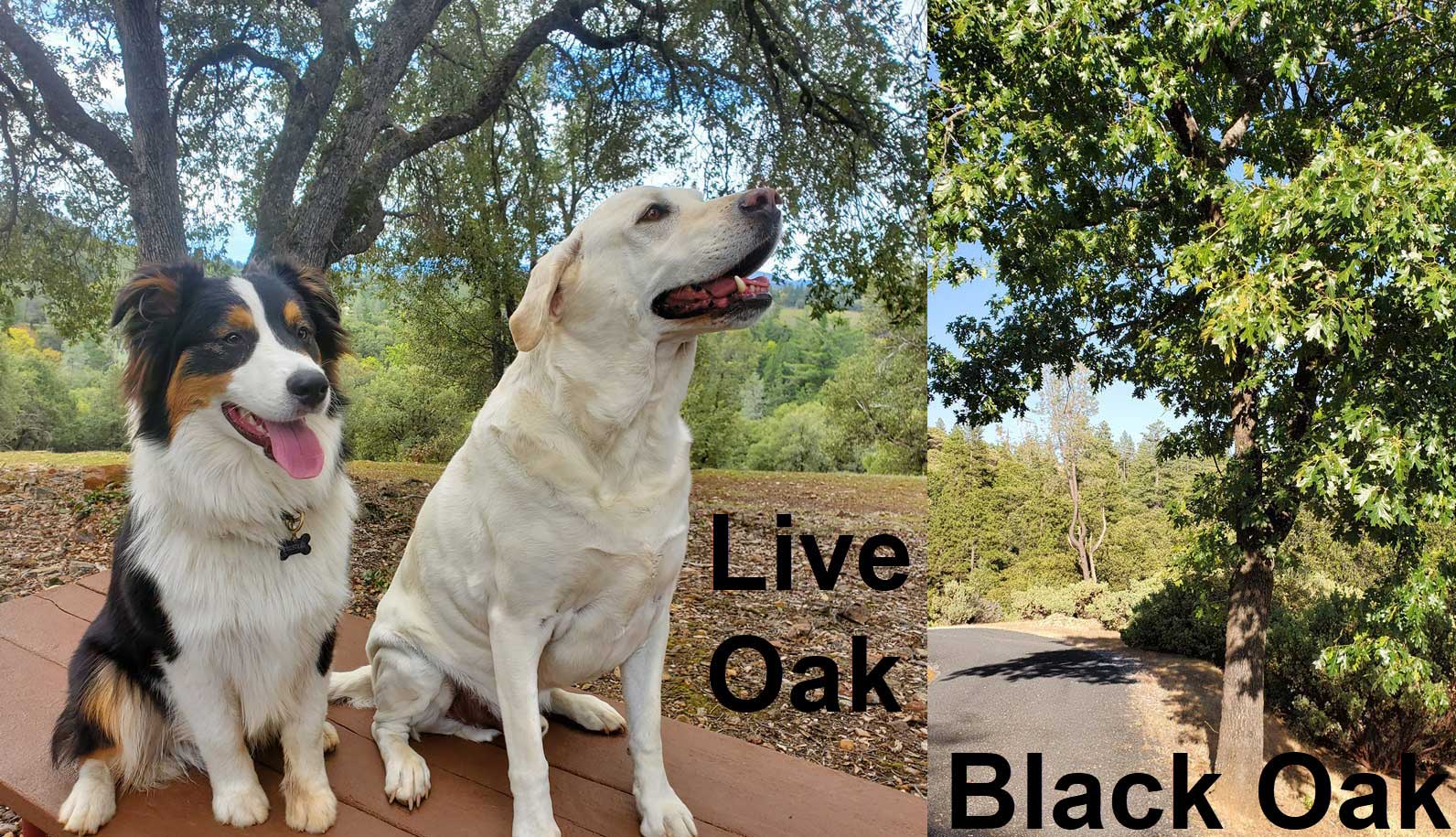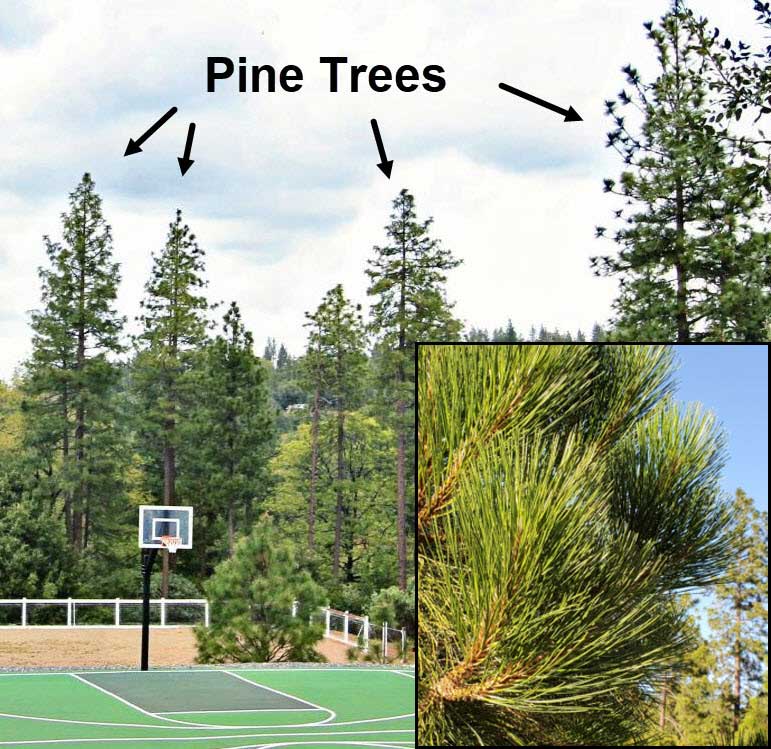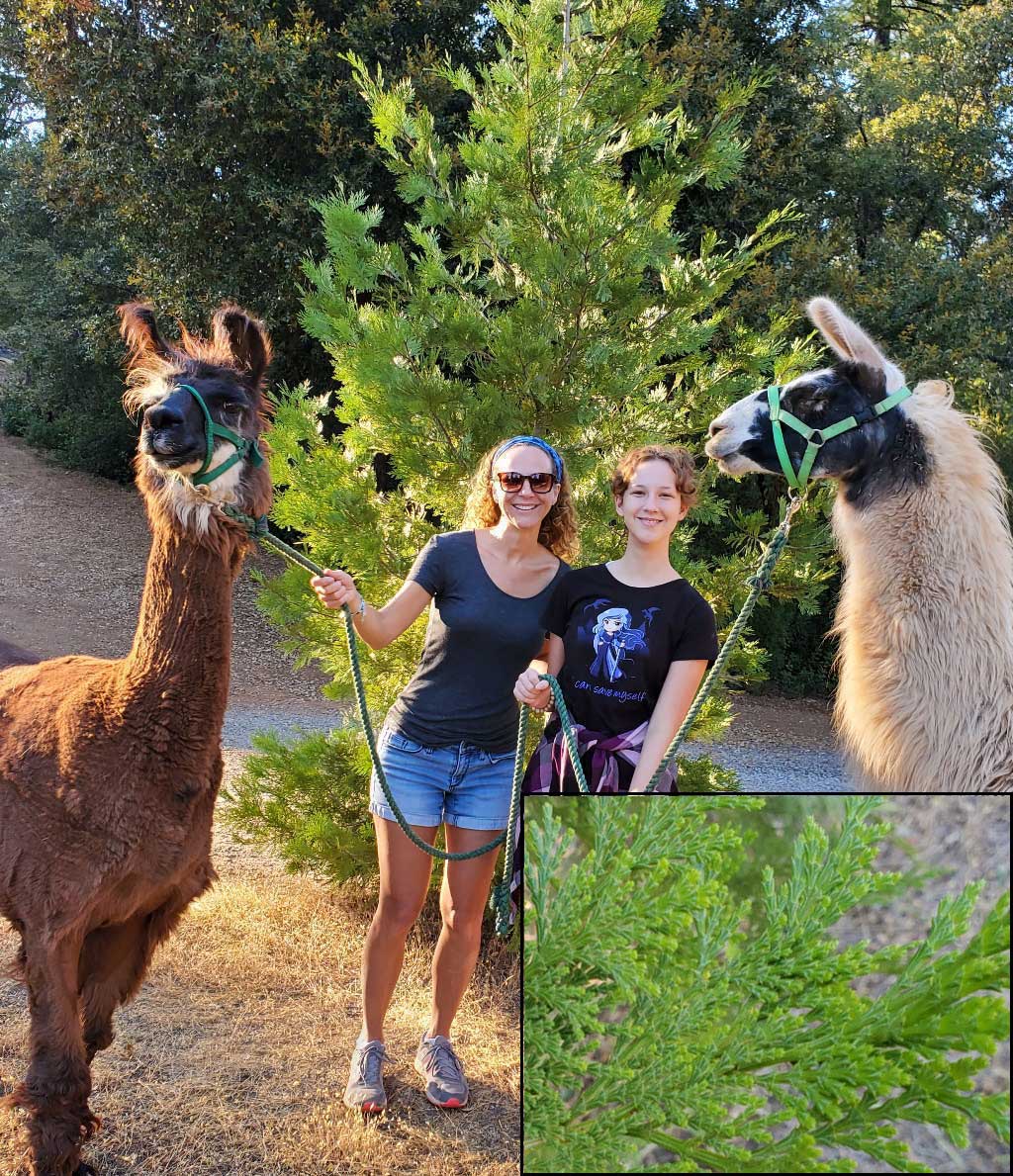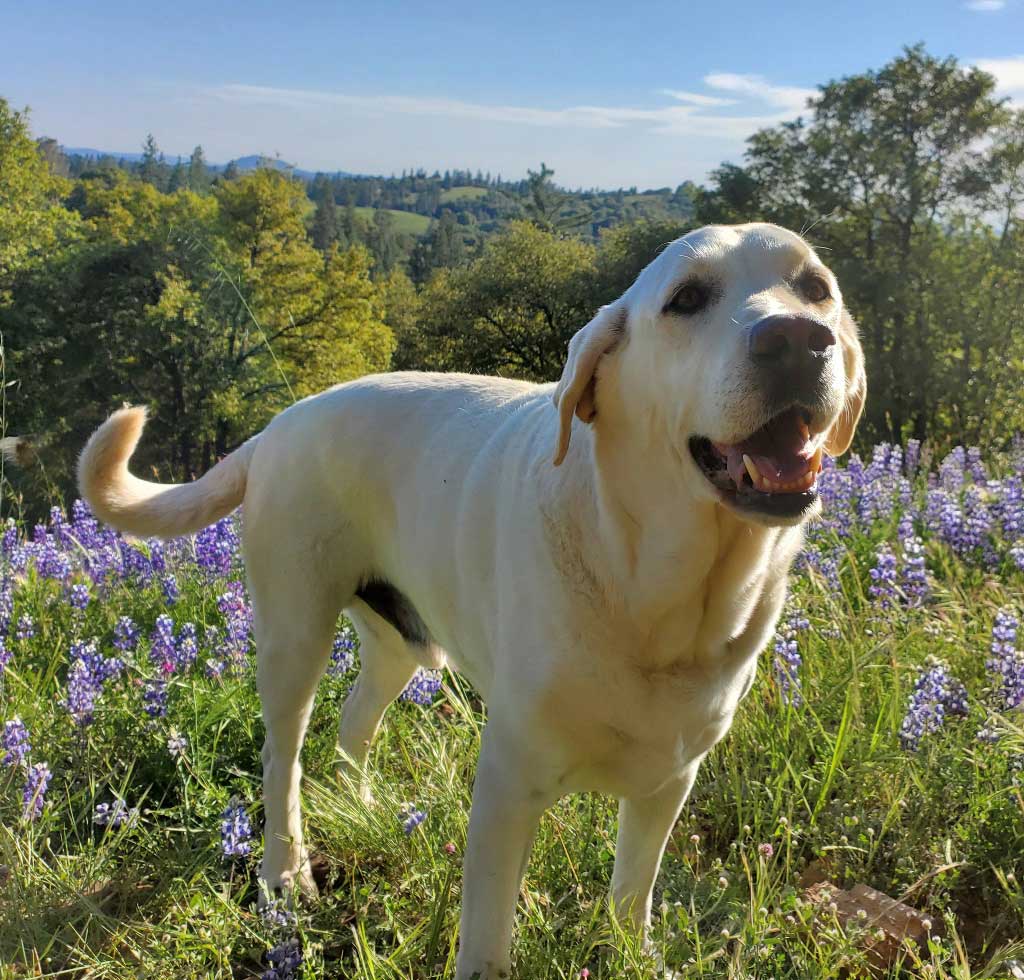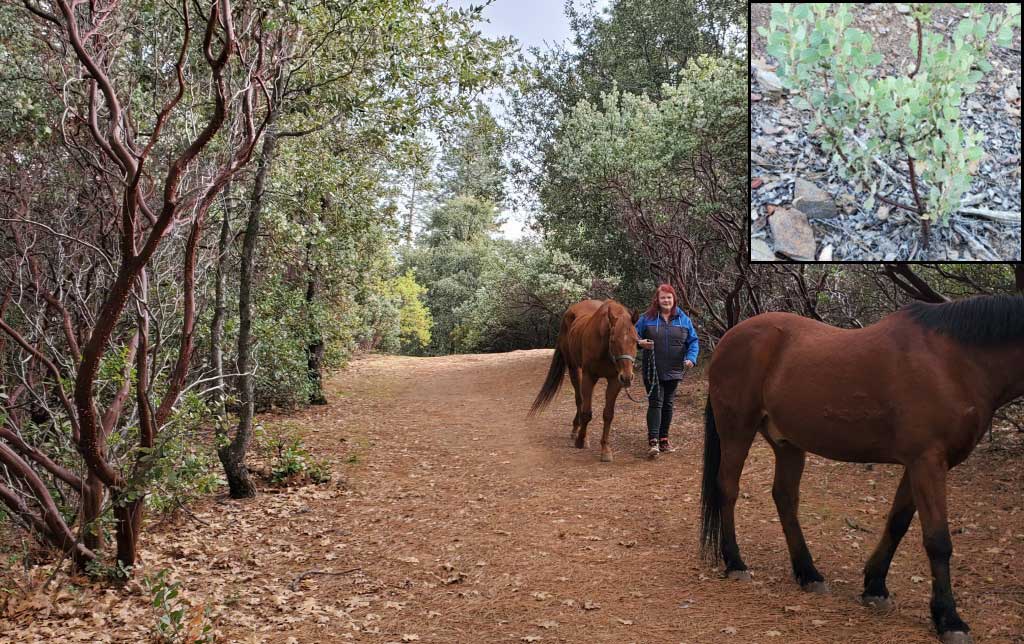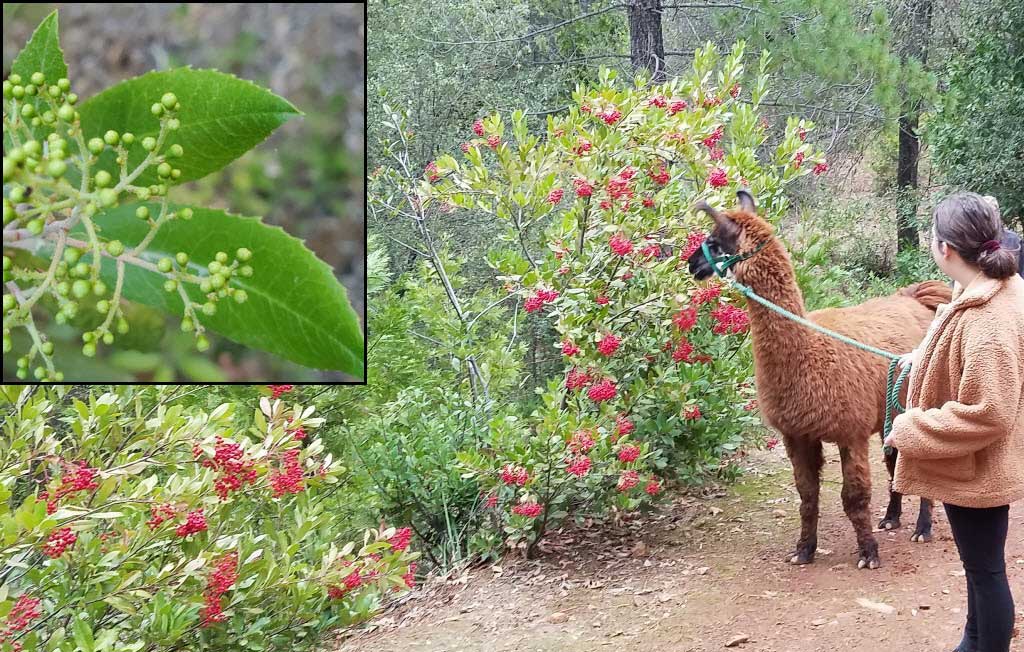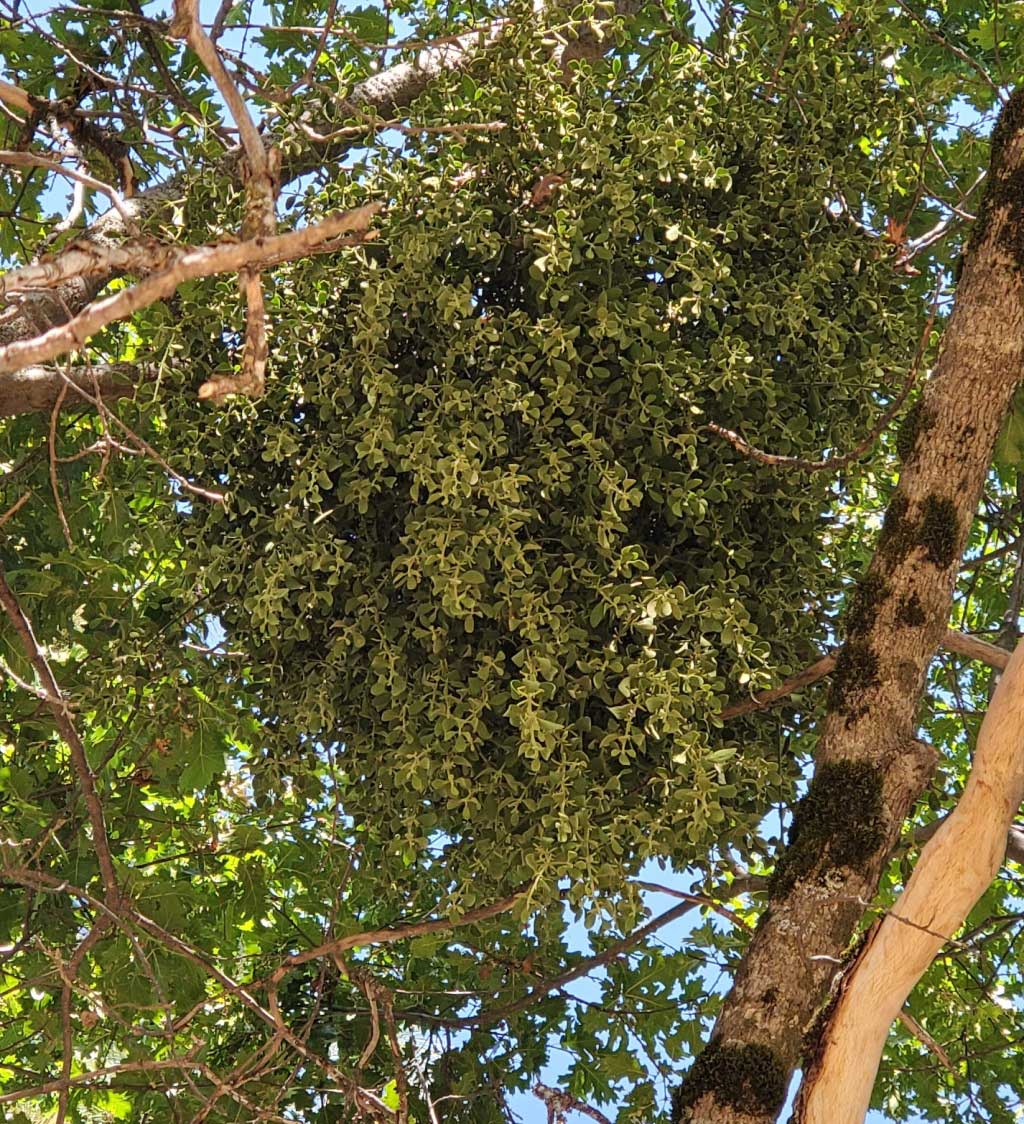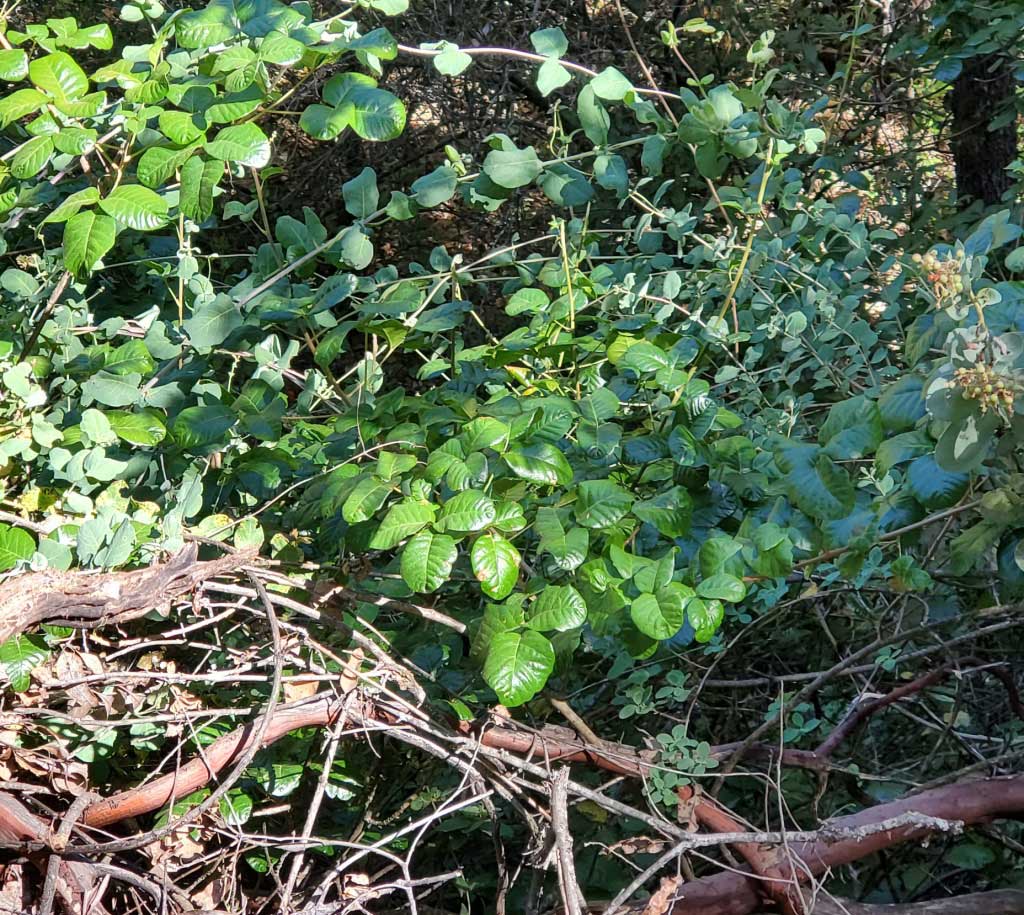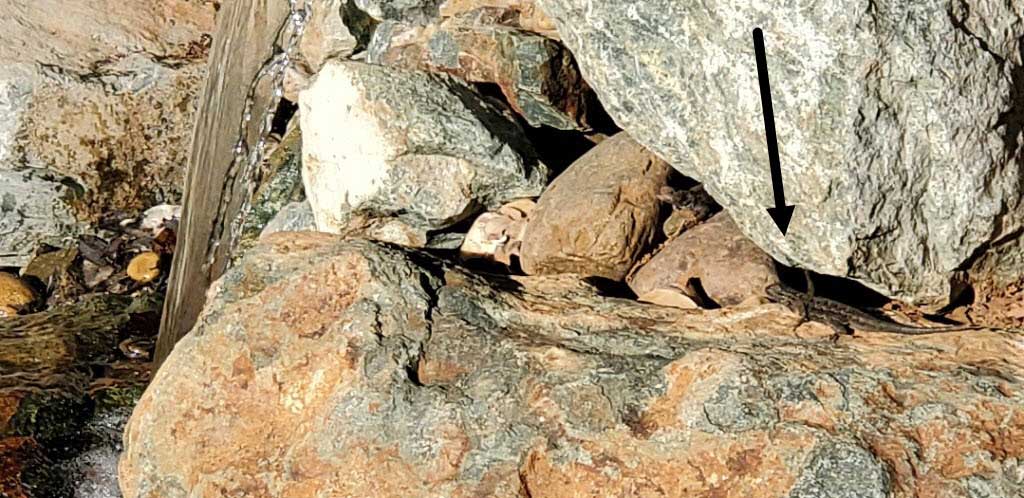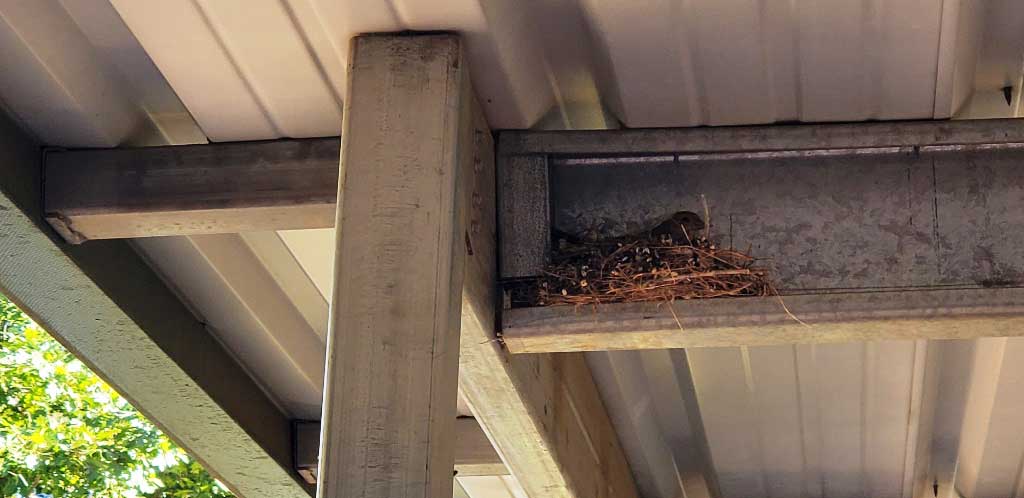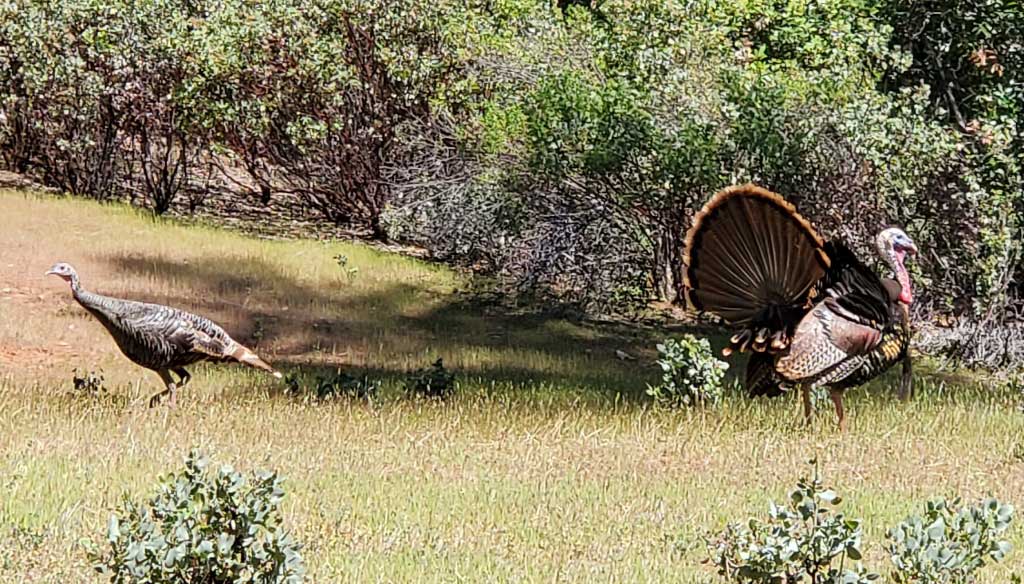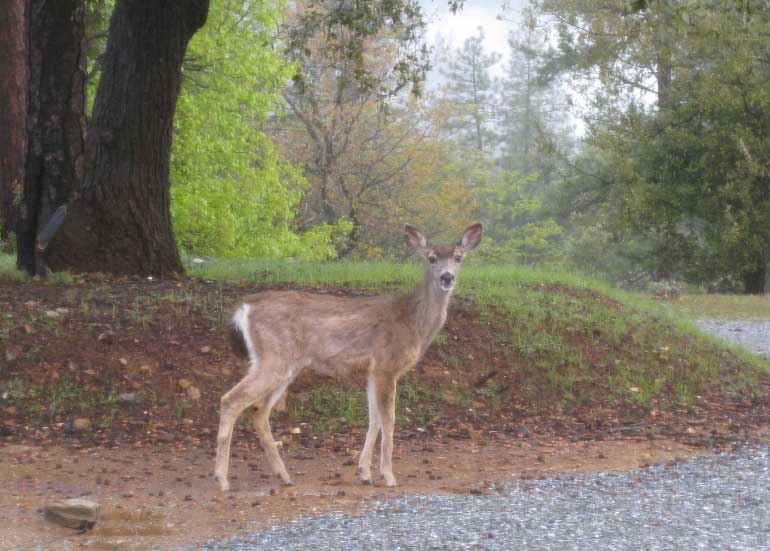Scavenger Hunt
By Cyndi | Jun 2021 | Ranch Info
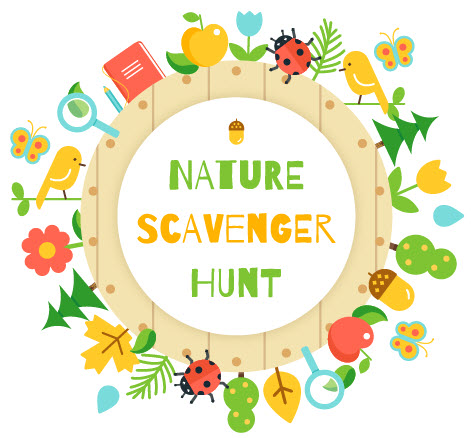
Our guests often give us great ideas including this suggestion for a scavenger hunt for kids visiting the Gold Country. Many of the flora and fauna are found throughout California and the photo answers are all from the Dog & Pony Ranch.
Participants can refer to the answer section to make the hunt more educational with additional facts. You may want to take photos to help remember the experience. Parents can choose to keep track of points achieved and post experience/points in the feedback section (though please be careful not to include too much personal info for privacy/safety of kids).
Trees and Plants
These are some of the most recognizable and common flora on our ranch. If you’re not familiar with one of them, take a look at the reference section and then see if you can find it.
- Oak trees (5 points, or 15 points to find/name 2 varieties of oak trees)
- Pine trees (5 points)
- Cedar trees (5 points)
- Wildflowers (5 points)
- Manzanita (5 points)
- Toyon (10 points)
- Mistletoe (10 points)
- Poison Oak (20 points - hard to find and important to know what looks like!)
Animals
These are the wild animals we see most often on the Dog & Pony Ranch and throughout Northern California. There are also many nocturnal animals that we are glad we don’t see during the day (skunks, raccoons, opossums, and predators like coyotes, foxes, bobcats, etc) so aren’t on the Scavenger Hunt list. One common critter in California that we fortunately have never seen in >20 years on this ranch is rattlesnakes – whew!
We have a few photos in the answers/reference section, and for more including nocturnal critters captured on infrared cameras, see our wildlife gallery.
- Lizard (5 points)
- Squirrel (5 points)
- Bird (5 points)
- Rabbit (5 points)
- Turkey (5 points for seeing, 5 points for hearing)
- Deer (5 points for does, 10 points for bucks)
Answers and Reference Info
Trees and Plants Answer Info
At our 2000’ elevation, about half of the trees on the Dog & Pony Ranch are oak and the other half are pine trees. Oak trees are large trees with a strong, hard wood that is often used to make floors and furniture. Acorns grow on oak trees so you’ll often see them on the ground before the deer and squirrels eat them.
Most of the oak trees at our ranch are live oaks and have smaller leaves that stay on the tree year-round which is called “evergreen”. Of course, some leaves are lost as part of the normal growth cycle, but they don’t drop all their leaves each fall (called “deciduous”) as the black oak trees do.
The black oak trees have a larger leaf that is brighter green that regrows each spring and drops each fall. During the winter, most of the trees without leaves are black oaks. We’ve planted a few other deciduous trees to provide dramatic fall color, but they aren’t listed in this scavenger hunt since not found naturally in this area.
Top of Scavenger Hunt
Pine trees are evergreen and are found at higher elevations so are one of the trees you’ll see in the Sierra mountains. The ranch is high enough that we have many pine trees of various sizes. Pine trees have “needles” instead of flat leaves and often have pinecones hanging on their branches too.
There are several variations such as ponderosa pine and bull pine, but they are harder to distinguish than the oak trees. Pine trees contributed much of the wood in our house including the trim and ceiling; a dead bull pine from our ranch was even used to make our great room fireplace mantle!
Top of Scavenger Hunt
This property used to have lots of cedar trees but they were harvested many years ago. There are a few majestic cedars such as the one in front of the barn area that towers over 70’ tall. Most of the cedar trees on the ranch are smaller ones growing up to replace the previous trees -- their shorter height makes it easy to reach the soft fern-like foliage. Cedar trees are evergreen.
Top of Scavenger Hunt
Wildflowers can be seen all around the ranch in the spring. The lupin shown in the photo are found in abundance near the picnic view spot and are my favorite. You’ll find many photos of lupin on our website and if you visit around April/May, you should be able to see it in person too.
Top of Scavenger Hunt
It’s hard to miss this plant when visiting the Dog & Pony Ranch. The abundant shrubs with red bark and small evergreen leaves are manzanita. It’s a constant chore to keep the manzanita cleared for trail enjoyment and fire safety. Manzanita grows back quickly since most animals won’t eat it, so you’ll find smaller bushes of various sizes as well as older tall manzanita with thick trunks that we’ve left to help define the trails (and because it’s too much work to keep it all cut down).
Top of Scavenger Hunt
We weren’t familiar with the toyon plant until we started clearing manzanita and found a shrub that often grew where manzanita had been. During the winter, it has pretty red berries and during the rest of the year, it’s easiest to identify it by the many little “teeth” on the edges of its evergreen leaves. This less-recognized-but-common shrub for the area has a street named after it just a few miles away.
Top of Scavenger Hunt
Most westerners think of standing under a sprig of mistletoe at Christmas for a kiss, a tradition that started in Victorian England (1800’s). It’s ironic that mistletoe seems like a romantic plant but is actually a parasitic plant that weakens the host trees where it grows. It’s easiest to see when black oak trees have lost their leaves and the remaining greenery is the mistletoe, so we try to cut it out of prominent oak trees during the winter. During the rest of the year, you can find mistletoe in trees we haven’t yet gotten it all removed.
Top of Scavenger Hunt
“Leaves of three, let it be!”. It’s good to be able to recognize this plant to avoid contact. Troy and I used to get poison oak often when clearing the “Dry Springs Trail” on the more lush south side of the ranch, but fortunately we have never gotten a rash when just hiking the trails. If your dog does a lot of running through the brush on the southern trails, you might pick it up with oils passed from Fido’s fur to your skin so keep your dog on the cleared trail if concerned. If you think you’ve had contact, be sure to wash thoroughly with soap and water to remove the oil that carries the nasty resin (urushiol). Animals aren’t affected by poison oak and some even eat it. Yes, it causes itchy bumps but we put some anti-itch cream on it (lots of other recommended remedies on the web) and don't let it stop us from enjoying the great outdoors.
Since we try to get rid of poison oak when we find it, we had to hunt for some for this photo. It was taken in June when the leaves are oily/shiny. In the fall, they typically turn red starting on the edges. The 3-leaf pattern usually consists of a single stem with 2 leaves directly across from each other and the 3rd forming a triangle shape. Let us know if/where you find more and we’ll try to eradicate it.
Top of Scavenger Hunt
Animals Answer Info
There are many little lizards that hide in the rocks and crevices, especially around the house. It’s easier to notice lizards when they move, but here is one in a favorite hiding place. I’ll try to capture some better photos, but I was anxious to post this Scavenger Hunt with several families arriving soon.
Top of Scavenger Hunt
We have grey squirrels which are always a favorite for dogs to chase and common to see running up a tree.
Top of Scavenger Hunt
Of course, there are lots of birds both big and small to see at the ranch. Every spring we get quite a few birds building nests in the barn eaves -- this mama bird liked it for her babies with lots of great nesting materials from the barn animals. We also often see big turkey vultures circling in the air on our big property and wonder what these scavengers are hunting!
Top of Scavenger Hunt
This is one of the animals that you don’t often see in the city, but we have many on the Dog & Pony Ranch. These are not cute little bunnies, but rather jack rabbits with big ears. We almost always see one or more running up the driveway in our headlights when we come home at night. When the fruit starts to fall off the trees in the backyard, we also regularly see brave rabbits come inside the fence to get a yummy snack. They seem to have timed how fast our Lab, Cody, can run out the door to the fruit trees, and know they can get to safety on the other side of the fence faster.
Top of Scavenger Hunt
We love seeing all the wild turkeys on our ranch and have many special memories of encounters. We’ve seen flocks of about 30 turkeys hanging around the pond. They are most active during mating seasons in the spring/fall when the male toms will spread their tail feathers in impressive displays and the sounds of “gobble gobble” are frequently heard. We’ve also seen turkey chicks running behind their mamas on our ranch. Yes, turkeys can fly short distances and these wild birds will take to the air if chased by dogs.
Top of Scavenger Hunt
Our pond attracts deer and we often see them bounding away when we drive past it. The 4’ field fence around our 60-acre property is no problem for deer who can easily leap over it. You’ll see bent areas of perimeter fence that I call “deer crossing signs” -- deer are smart about conserving energy for when they need it and will choose to jump over lowered portions. Our motion-activated game cameras have caught some interesting deer photos so check-out the wildlife gallery too. You’ll likely see lots of deer while driving gold country roads so please watch out and be careful.
See many more photos of deer including bucks with antlers on our property on our wildlife gallery.
Top of Scavenger Hunt
